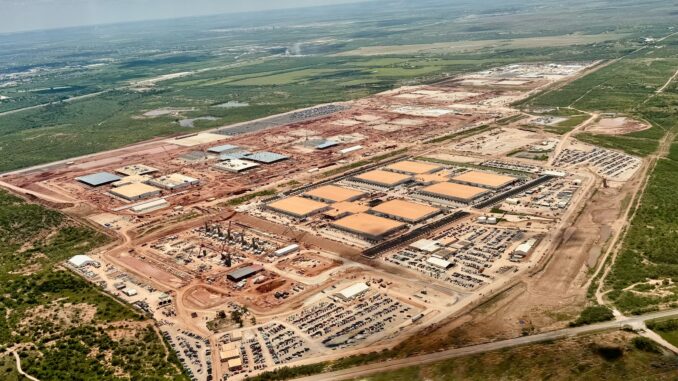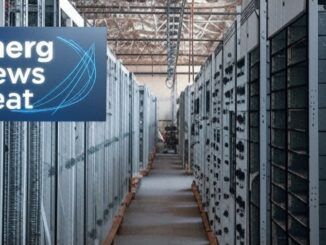
In a landmark move that underscores the escalating energy demands of artificial intelligence, OpenAI has announced a partnership with Oracle to develop an additional 4.5 gigawatts (GW) of data center capacity for its Stargate AI infrastructure platform.
This collaboration, revealed in July 2025, pushes the total Stargate capacity under development to over 5 GW, capable of supporting more than 2 million AI chips.
As AI continues to reshape industries, this expansion highlights both the opportunities and challenges in the energy sector, particularly amid warnings from the U.S. Department of Energy (DOE) about impending grid reliability crises.
The Stargate Project: Powering the AI Revolution
OpenAI’s Stargate initiative represents a bold vision for AI infrastructure, aiming to deliver advanced computing power to drive innovation and economic growth. The partnership with Oracle builds on the existing Stargate I facility in Abilene, Texas, which is already operational and running early training workloads using Nvidia GB200 racks.
This new 4.5 GW addition is part of OpenAI’s broader commitment, announced at the White House in January 2025, to invest $500 billion in 10 GW of AI data centers across the U.S. over the next four years.
The energy implications are staggering. Data centers like Stargate require immense, reliable power—equivalent to the output of several nuclear plants—to operate around the clock. OpenAI’s collaboration extends to partners like SoftBank and CoreWeave, with Microsoft continuing to provide cloud services.
Beyond tech, the project is poised to create over 100,000 jobs in construction, operations, and related sectors, boosting local economies and reindustrialization efforts.
However, this rapid scaling comes at a time when the U.S. energy grid is under unprecedented strain, as detailed in the DOE’s recent grid reliability report.
DOE Sounds the Alarm on Grid Vulnerabilities
The DOE’s July 7, 2025, report paints a dire picture of the nation’s power infrastructure, projecting a 16% increase in electricity demand over the next five years, largely fueled by AI data centers and advanced manufacturing.
AI alone could add 35–108 GW of load by 2030, with the report using a midpoint estimate of 50 GW.
Meanwhile, 104 GW of generation capacity—mostly coal—is slated for retirement, outpaced by only 22 GW of new firm baseload additions like natural gas and nuclear.
This mismatch could result in a 100-fold increase in outage risks, potentially leading to over 800 hours of annual blackouts compared to the current single-digit figures.
Regions like PJM and ERCOT are particularly vulnerable, each requiring about 10.5 GW of additional “perfect capacity” to maintain reliability.
The report emphasizes the need for modernized planning models that account for outage frequency, duration, and interregional dependencies, while highlighting economic and national security risks if these issues go unaddressed.
While the DOE focuses on bolstering firm baseload sources and energy storage (with 31 GW of batteries modeled by 2030), it also nods to the potential of distributed solutions in metrics like Normalized Unserved Energy (NUSE), where smaller systems like microgrids could play a role in mitigating impacts.
As AI-driven demand threatens to overwhelm traditional grids, industry trends point to microgrids and backup generators as innovative, decentralized solutions. Microgrids—self-contained energy systems that can operate independently or in tandem with the main grid—are gaining traction for their ability to provide resilient, on-site power to data centers.
They enable “island mode” operation during outages, ensuring uninterrupted AI workloads while integrating renewables like solar and wind for sustainability.
Recent analyses show microgrids surging in popularity due to AI’s energy intensity, offering faster, cleaner, and cheaper alternatives to grid upgrades.
For instance, data centers are establishing microgrids through direct interconnections with renewable generators, reducing reliance on strained utilities and cutting costs.
Virtual Power Plants (VPPs), which aggregate distributed resources including microgrids, are also emerging to help data centers act as “good grid citizens” by balancing loads and preventing blackouts.
Backup generators, particularly those powered by natural gas or diesel with low-emission tech, are becoming essential for redundancy. With AI pushing global electricity demand skyward, reliable backups ensure operational continuity amid potential grid failures.
Companies like Cummins are highlighting trends in AI-optimized cooling and energy use, where backup systems integrate with storage for hybrid resilience.
These trends align with broader sustainability goals, as microgrids often incorporate energy storage (like the 4-hour batteries in DOE models) to smooth variable renewables.
Projections indicate AI data centers could consume up to 9% of U.S. grid power by 2030, making decentralized solutions critical for future-proofing.
Investor Opportunities in a Strained Energy Landscape
The convergence of projects like Stargate and grid challenges presents fertile ground for investors. The DOE report spotlights companies in reliable power: Peabody Energy (BTU) could benefit from delayed coal retirements, while Constellation Energy (CEG) and Vistra Corp (VST) stand out for nuclear and diverse portfolios in high-risk regions.
NextEra Energy (NEE) balances renewables with gas, and GE Vernova (GEV) leads in grid modernization tech.
In the microgrid and backup space, firms specializing in distributed energy—such as those developing AI-optimized systems—offer growth potential. Energy storage players like Fluence Energy (FLNC) align with DOE initiatives for long-duration solutions.
As data centers invest in on-site power, opportunities abound in nuclear revival and hybrid microgrids, potentially yielding high returns amid the AI boom.






